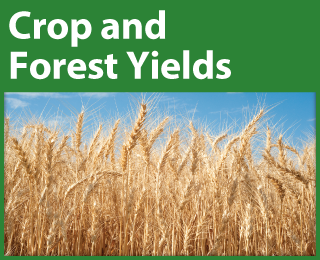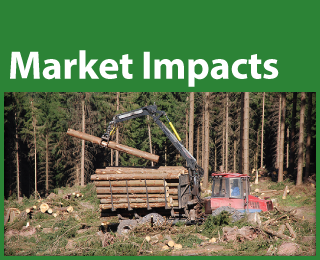Climate Action Benefits: Agriculture and Forestry
The U.S. has a robust agriculture sector that produces nearly $330 billion per year in agricultural commodities.1 The sector ensures a reliable food supply and supports job growth and economic development.2 In addition, as the U.S. is currently the world’s leading exporter of agricultural products, the sector plays a critical role in the global economy.3
U.S. forests provide a number of important goods and services, including timber and other forest products, recreational opportunities, cultural resources, and habitat for wildlife. Forests also provide opportunities to reduce future climate change by capturing and storing carbon, and by providing resources for bioenergy production.4
How are agriculture and forestry vulnerable to climate change?
U.S. agricultural and forest production are sensitive to changes in climate, including changes in temperature and precipitation, more frequent and severe extreme weather events, and increased stress from pests and diseases.5 At the same time, climate change poses an added risk to many forests due to ecosystem disturbance and tree mortality through wildfire, insect infestations, drought, and disease outbreaks.6 Climate change has the potential to both positively and negatively affect the location, timing, and productivity of agricultural and forest systems, with economic consequences for and effects on food security and timber production both in the U.S. and globally.7,8 Adaptation measures, such as changes in crop selection, field and forest management operations, and use of technological innovations, have the potential to delay and reduce some of the negative impacts of climate change, and could create new opportunities that benefit the sector.
What does CIRA cover?
The CIRA analysis estimates climate change impacts on the agriculture and forestry sectors using both biophysical and economic models. The agriculture analyses demonstrate effects on the yield and productivity of major crops, such as corn, soybean, and wheat, but do not include specialty crops, such as tree fruits, or livestock. Further, the analysis does not explicitly model impacts on biofuel production or include technological advances in agricultural management practices. The analyses include yield and productivity impacts, but do not simulate the effects of changes in wildfire, pests, disease, and ozone. Future work to improve the multiple interactions among the CIRA energy, water, and agriculture analyses will aid in better understanding potential impacts to these sectors.


